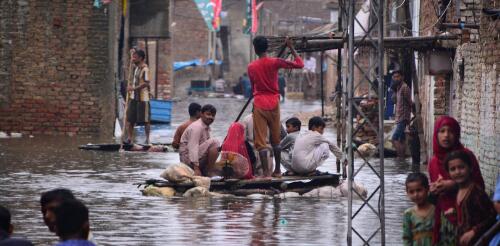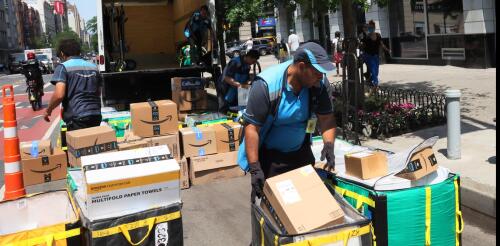Climate change
Heat waves, droughts and extreme weather are endangering people and ecosystems somewhere in the world almost every day. These extremes are exacerbated by climate change, driven primarily by increasing emissions of greenhouse gases that build up in the atmosphere and trap heat at the Earth’s surface. With that in mind, researchers are exploring ways to pull carbon dioxide out of the atmosphere and lock it away – including using the ocean. But while these techniques might work, they raise serious technical, social and ethical questions, many of which have no clear answers yet. We study climate change policy, sustainability and environmental justice. Before people start experimenting with the health of the ocean, there are several key questions to consider. Ocean carbon dioxide removal 101 The ocean covers about 70% of the planet, and it naturally takes up carbon dioxide. In fact, about a quarter of human-produced carbon dioxide ends up in the ocean. Ocean carbon di...
In the arid American West, wildfires now define summer. Recent years have seen some of the worst wildfires in recorded history. Climate change, the loss of Indigenous burning practices and a century of fire suppression are increasing the risk of larger, hotter and more frequent wildfires. I’m a wildlife ecologist studying how the presence of wolves and other predators is affecting deer and elk in Washington state. I’m particularly interested in understanding how these species interact in changing landscapes. Habitat degradation and other factors have caused populations of mule deer, a common species in many parts of the West, to decline across much of their native range. My collaborators and I recently published a study examining how mule deer use forests that have burned, and how wildfires affect deer interactions with cougars and wolves. We found that mule deer use these burns in summer but avoid them in winter. Deer also adjusted their movement to reduce preda...
Americans want their electricity to be cheap, clean and reliable, but that trifecta is becoming more elusive, thanks to climate change. According to a 2021 report by the nonprofit research organization Climate Central, more than 80% of reported major outages across the U.S. from 2000 through 2021 were caused by weather extremes, such as heat waves, wildfires and tropical storms. We are an economist and an electrical engineer investigating how increased use of two-way smart meter technology can be used to reduce greenhouse gas emissions from the electricity sector and help the economy withstand climate-driven weather extremes. As we see it, adapting the power system to increasingly volatile weather will require a combination of user-friendly technologies and economic incentives. From January through September 2022, the U.S. experienced 15 weather and climate disaster events with losses exceeding $1 billion each. Some of these events caus...
You may be hearing the phrase “loss and damage” in the coming weeks as government leaders meet in Egypt for the 2022 U.N. Climate Change Conference. It refers to the costs, both economic and physical, that developing countries are facing from climate change impacts. Many of the world’s most climate-vulnerable countries have done little to cause climate change, yet they are experiencing extreme heat waves, floods and other climate-related disasters. They want wealthier nations – historically the biggest sources of greenhouse gas emissions – to pay for the harm. A powerful example is Pakistan, where extreme rainfall on the heels of a glacier-melting heat wave flooded nearly one-third of the country in the summer of 2022. The flooding turned Pakistan’s farm fields into miles-wide lakes that stranded communities for weeks. More than 1,700 people died, millions lost their homes and livelihoods, and more than 4 million acres of crops and orchards,...
Curious Kids is a series for children of all ages. If you have a question you’d like an expert to answer, send it to curiouskidsus@theconversation.com. How many Amazon packages get delivered each year? – Aya K., age 9, Illinois It’s incredibly convenient to buy something online, right from your computer or phone. Whether it’s a high-end telescope or a resupply of toothpaste, the goods appear right at your doorstep. This kind of shopping is called “e-commerce” and it’s becoming more popular each year. In the U.S., it has grown from a mere 7% of retail purchases in 2012 to 19.6% of retail and US$791.7 billion in sales in 2020. Amazon’s growing reach For Amazon, the biggest player in e-commerce, this means delivering lots of packages. In 2021 the company shipped an estimated 7.7 billion packages globally, based on its nearly $470 billion in sal...




